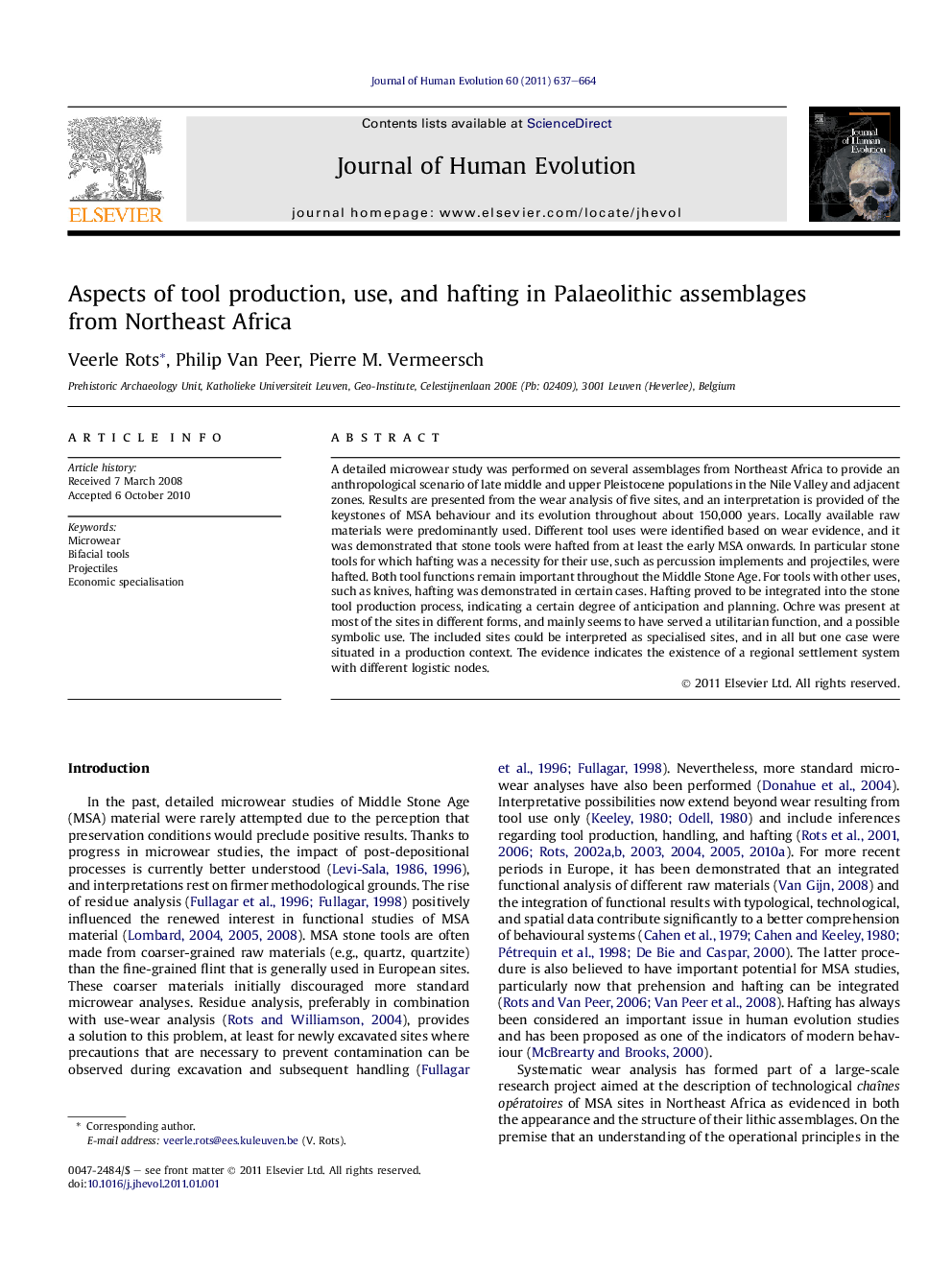| کد مقاله | کد نشریه | سال انتشار | مقاله انگلیسی | نسخه تمام متن |
|---|---|---|---|---|
| 4556625 | 1329491 | 2011 | 28 صفحه PDF | دانلود رایگان |

A detailed microwear study was performed on several assemblages from Northeast Africa to provide an anthropological scenario of late middle and upper Pleistocene populations in the Nile Valley and adjacent zones. Results are presented from the wear analysis of five sites, and an interpretation is provided of the keystones of MSA behaviour and its evolution throughout about 150,000 years. Locally available raw materials were predominantly used. Different tool uses were identified based on wear evidence, and it was demonstrated that stone tools were hafted from at least the early MSA onwards. In particular stone tools for which hafting was a necessity for their use, such as percussion implements and projectiles, were hafted. Both tool functions remain important throughout the Middle Stone Age. For tools with other uses, such as knives, hafting was demonstrated in certain cases. Hafting proved to be integrated into the stone tool production process, indicating a certain degree of anticipation and planning. Ochre was present at most of the sites in different forms, and mainly seems to have served a utilitarian function, and a possible symbolic use. The included sites could be interpreted as specialised sites, and in all but one case were situated in a production context. The evidence indicates the existence of a regional settlement system with different logistic nodes.
Journal: Journal of Human Evolution - Volume 60, Issue 5, May 2011, Pages 637–664